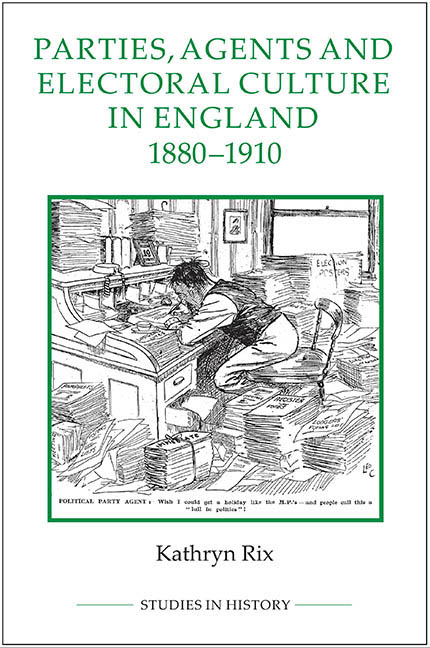Book contents
- Frontmatter
- Dedication
- Contents
- Tables
- Acknowledgements
- Abbreviations
- Introduction
- 1 The changing electoral system
- 2 The rise of the professional agent
- 3 The agents as aspiring professionals
- 4 The agents in the constituencies: registration and political education
- 5 The Agents in the Constituencies: The Social Side of Politics
- 6 Electioneering: the candidates
- 7 Electioneering: the campaign
- Conclusion
- Bibliography
- Index
5 - The Agents in the Constituencies: The Social Side of Politics
Published online by Cambridge University Press: 13 April 2017
- Frontmatter
- Dedication
- Contents
- Tables
- Acknowledgements
- Abbreviations
- Introduction
- 1 The changing electoral system
- 2 The rise of the professional agent
- 3 The agents as aspiring professionals
- 4 The agents in the constituencies: registration and political education
- 5 The Agents in the Constituencies: The Social Side of Politics
- 6 Electioneering: the candidates
- 7 Electioneering: the campaign
- Conclusion
- Bibliography
- Index
Summary
Alongside their efforts at registering and educating the electorate, the parties endeavoured to win recruits by creating a broader social appeal. This involved not just registered voters, but the wider community, including women (who might serve as voluntary workers, notably in the case of the Primrose Dames) and children. Social activities were often regarded as a necessary accompaniment to the work of political education: ‘people sing, dance, eat, drink … and a political address, a bit of party claptrap, is slipped in incidentally between the acts to make it go down’. As with other aspects of party organisation, the agents took a leading role in superintending such activities. The need to make party meetings attractive was especially important given expanding provision of alternative forms of amusement: ‘increasing real income for many sections of the working class meant a growing enjoyment of a commercialised leisure system of public houses, music halls, professional spectator sport’. As well as introducing a social element into meetings, the parties – in common with bodies such as temperance organisations and churches – sought to attract adherents through ancillary activities, including benefit societies, cycling corps, working-men's clubs and juvenile branches.
Alongside the perception that ‘a rationalist view of politics’ lay at the heart of Liberalism, the Conservatives have, conversely, been regarded as more proficient at exploiting what contemporaries referred to as the ‘social side’ of politics. 4Ostrogorski considered them ‘the past masters in the organization of “social meetings” and in the art of making them attractive’. Historians have also highlighted the differences between the parties in this regard. Jon Lawrence observes that ‘where Liberalism was associated with the dry procedural debate of the branch meeting, Conservatism was associated with entertainment and spectacle’.In the Primrose League particularly, with its dances, fêtes and excursions, the Conservatives possessed an auxiliary organisation which Liberals found hard to match: ‘it offered politics in a far more enjoyable, intellectually undemanding form than its rivals within and outside Conservatism’. In contrast, both historians and contemporaries note the lacklustre and somewhat high-minded nature of Liberal efforts to emulate the League, which were characterised by the Daily Telegraph as ‘perfunctory and cold’.
- Type
- Chapter
- Information
- Parties, Agents and Electoral Culture in England, 1880-1910 , pp. 155 - 171Publisher: Boydell & BrewerPrint publication year: 2016



